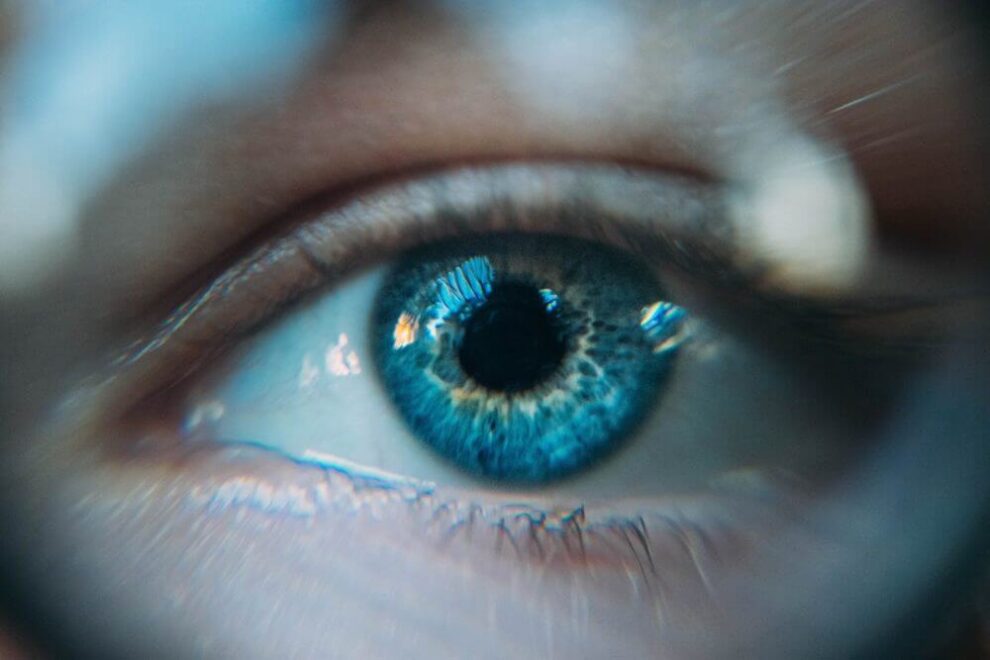Posted by: Kentucky Eye Institute in Vision Care

They say hindsight is 20/20, but what is 20/40?
If you’re amongst the two out of three Americans who use vision correction in some way, you may be familiar with these kinds of ratios. Or, you may be completely unfamiliar, especially if you’ve never looked at the prescription your doctor has given you.
In this article, we’ll answer the question, “What does 20 40 vision mean?” in addition to related questions that may come up when studying vision prescriptions and types.
What Does 20 40 Vision Mean?
You’re probably already familiar with the term “20/20 vision.” Many people believe this means your vision is perfect, but that isn’t actually the case. Someone with 20/20 vision doesn’t have razor-sharp vision, but sees things at 20 feet that most people who don’t need vision correction see at 20 feet. Hence the vision of 20/20.
A person with 20/40 vision sees things at 20 feet that most people who don’t need vision correction can see at 40 feet. This means that they are nearsighted, but only slightly. A person with 20/40 vision may or may not need eyeglasses or contacts, and can discuss his or her options with a doctor.
In some cases, people with very bad vision can only have their vision corrected to 20/70, meaning they can see objects from 20 feet away that others can see at 70 feet. In this case, the person has what is known as low visual impairment.
Visual Acuity
Testing your vision and coming up with a ratio, like 20/10 or 20/40, measures your visual acuity. This is the scientific word for the ratio, and what your doctor will likely put on your chart or prescription for visual aids, like contacts or eyeglasses.
Can Someone Have Better Than 20/20 Vision?
You might have erroneously thought that 20/40 vision meant that a person’s vision is better than 20/20, but that isn’t the case. However, there are people who do have vision better than 20/20.
Their vision is measured at 20/10, meaning they can see things at 20 feet that people who don’t need visual aids can see at 20 feet. People with 20/10 vision do not need glasses, though they may at some point in their lives. They are most likely to become far-sighted, or someone who has a better vision far away than up close.
They may one day require reading glasses.
How Does an Eye Doctor Determine If I Have 20/40 Vision?
If you go to an appointment with an eye doctor, or sometimes at a clinic where you may have a physical, you’ll likely have an eye test to measure your visual acuity. During the eye test, you’ll read the letters on an eye chart, known as the Snellen Eye Test.
How far down you can read on the eye chart, with and without vision correction, will determine what the ratio your eye doctor will give.
This ration will also help determine what prescription you need, if any. Your doctor can also note your visual decline or progress over a period of time. This is especially important for those who have certain conditions that affect the eye, or if they have had LASIK or cataract surgery.
Your doctor may also test your eyes with something called a phoropter. He or she will place this in front of your eyes and switch different lenses in front of them to determine which prescription is best for you.
Can I Get Eyeglasses to Have 20/10 Vision?
Depending on the state of your eye health and vision, most eye doctors strive to give eyeglasses to individuals that correct their vision to 20/20. This is the “perfect” score that enables most people to see clearly.
However, your vision may be so bad that the doctor is only able to correct your vision to say 20/70. Someone who is legally blind, however, can only have their acuity corrected to 20/200.
Technicians can make glasses that correct your vision to 20/10, but most will shy away from this request. This is because it can damage your short-sighted vision or the way you see things up close. As such, doctors will likely only make glasses up to 20/20.
What Else Can the Eye Doctor Determine From an Eye Test?
When you go to an eye doctor appointment, your doctor will likely test for more than just your visual acuity.
A doctor will also test for various eye disorders and diseases, and may also test to see if you suffer from dry eyes. They may also investigate to see if you have an underlying disorder that could contribute to dry eye.
An eye doctor will also measure the pressure of your eye. After dilating your eyes, your doctor might also use several lights to see the inside of your eye to make sure it looks healthy. The doctor may also look at your retina, which lines the back of the eye. The retina is important because it helps send signals to the brain to convert what you see into something you recognize.
Depending on your age, your eye doctor may also check for glaucoma and other eye issues that occur as you grow older.
What Do I Do If I Notice My Vision Isn’t As Good As It Used To Be?
If you are concerned about your eyesight, you should visit your eye doctor as soon as possible. Don’t wait, as doing so can cause you to strain your eyes even more if you’re struggling to see through old glasses, or to see without them.
Now that you know the answer to the question, “What does 20 40 vision mean?” you’ll be able to better interpret the results of your Snellen Eye Test once the doctor gives you one.
Contact us now to set up your next eye appointment and get your eyes tested today.
